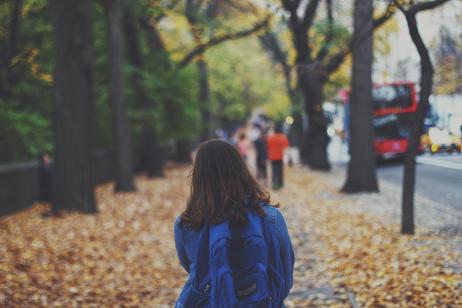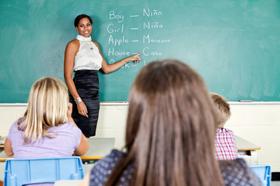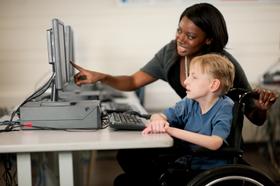The coronavirus pandemic entered the United States with force, shutting down businesses and closing down schools in a matter of weeks. After months of partial or total lockdown, parts of the country are starting to reopen which leaves parents wondering what the future holds for their child’s education.
In this article, we’ll take a closer look at the financial impact of COVID-19 on public schools and what to expect in the future. We’ll talk about the effects of budget cuts and other challenges affecting the public school system for the remainder of this school year and into the next.
Budget Cuts and Changes in State Revenue
The public school system is generally funded by the state through income, property, and sales taxes. Some public schools receive federal funding as well, or funding from outside sources.
In many cases, the school districts that need the most funding are not the ones that get it. In Pennsylvania, for example, high-poverty districts receive 33% less funding than wealthier districts. On the whole, only about 1 out of 5 states spend more money on their neediest schools, though that’s an improvement from 2008. In the wake of COVID-19, many public schools fear for their futures.
In Michigan, the Kalamazoo Public School’s budget is expected to decrease by 10% to 25% in the coming school year. A 25% cut in funding amounts to roughly $27 million. According to KPS Interim Superintendent Gary Start, it’s the worst state cut he’s ever seen. The cut could result in layoffs as well as cuts to student programs, wages, and other budgetary items equivalent to a loss of $840 to $2,000 per student. If the government doesn’t provide aid to help them recoup losses caused by the pandemic, they could be facing another $10 million lost revenue.
Kalamazoo is far from the only district struggling in the wake of the COVID-19 pandemic. In just 5 weeks, since states started issuing shelter-in-place orders, nearly all 50 states have seen significantly reduced economic activity. Preliminary estimates show revenue drops between 10% and 20% for most states.
The International Monetary Fund has predicted that this will be the worst economic downturn in the United States since the Great Depression. Nearly 22 million Americans (more than 1 in 10 working adults) have applied for unemployment insurance and it would be naïve to think that the public education system won’t feel the effects of such a downturn. The federal government passed the Coronavirus Aid, Relief, and Economic Security (CARES) Act to help fund public education, but it isn’t nearly enough to make up for the expected state budget cuts.
What Did the CARES Act Provide?
According to the U.S. Department of the Treasury, the CARES Act “provides fast and direct economic assistance for American workers and families, small businesses, and preserves jobs for American industries.” It was passed by Congress with bipartisan support and signed into law March 27th, 2020.
Described as a show of the Trump administration’s commitment to protecting the American people, the $2 trillion economic relief package provided aid to individuals in the form of a $1,200 payment with additional benefits for small businesses, state and local governments, and industries impacted by the pandemic. But what exactly did it provide for the public-school system?
According to the Learning Policy Institute, CARES education funding is equivalent to under 2% (about 1.9%) of P-12 educational revenue in all 50 states and Washington, DC for the 2020-21 school year. To put it in perspective, the CARES act provided about $286 per student, on average.
How Are Schools Being Affected?
Even after the CARES Act goes into effect, state education spending is expected to drop by 10% or more which means a reduction of over $21 billion for P-12 programs. A larger 20% reduction would equate to a loss of over $57 billion for American public schools. Such a giant loss of revenue could impact schools in many ways, but it would be the equivalent to the loss of nearly 750,000 teaching jobs.
The CARES Act provided some much-needed assistance, but it’s just a drop in the bucket. Furthermore, it’s difficult to say how much of the funding will even go to the schools that need it most.
Funding for the CARES Act comes from two sources: the Elementary and Secondary School Emergency Relief (ESSER) Fund and the Governor’s Emergency Education Relief (GEER) Fund. Under the CARES Act, states are required to distribute ESSER funding in proportion to a district’s share of the state’s Title I-A funding while Governors are free to distribute GEER funds to either K-12 or higher education institutions. Districts must allocate some funding to private schools in their jurisdiction based on their enrollment of low-income students.
A reduction in funding has a complex affect on any individual school. Unfortunately, budget cuts tend to have the greatest negative impact on low-income districts and the students they serve.
Here are some of the ways budget cuts can affect students:
- Schools may be required to scale back educational services
- Some districts may be required to raise local revenue to fill the gaps
- Schools may need to cut salaries and wages for teachers and other employees
- Some schools may need to layoff teachers and staff to reduce spending
- Class sizes may increase as the number of teachers declines
- Some schools may not have enough resources to go around (ex: sharing books)
- After-school services and meal programs may be reduced or removed
The education system in the United States has been a work in progress for decades. Many states have implemented education reforms by improving teacher quality, limiting class sizes, and expanding learning time. Budget cuts greatly undermine these reforms by limiting the funds available to make necessary improvements.
How Are Teachers Being Affected?
The public school system is often thought of as a singular entity when, in fact, it is made up of numerous districts and, within them, individual schools. Each school is made up of dozens of teachers and hundreds, sometimes thousands of students. Budget cuts and reduced state spending trickle down, affecting people at every level but it is often the teachers who feel the cuts most vividly.
If current projections are correct, the reduction in education spending following the COVID-19 pandemic will be two and a half times worse than even the lowest point of the Great Recession.
Unfortunately, many school districts will continue their current spending patterns instead of making adjustments across the board. As a result, layoffs will likely be among the most significant ways to make up for budget shortfalls. A 15% reduction in state funding for education could result in the loss of over 300,000 teaching positions. In individual states, some would see losses of 20% of their teaching staff.
In the early days of the COVID-19 pandemic, healthcare workers were described as working on the “frontline.” When it comes to the public education system, teachers are the frontline workers. Budget cuts reduce the number of teachers and the resources they have to work with which could have a significant impact on an entire generation of students.
In the short term, teachers find themselves scrambling to adjust to a shift toward remote education. Though many states are starting to reopen, there are questions about the upcoming school year and whether education will continue online or revert back to in-person instruction.
What About Grades and State Testing Requirements?
Public schools rely on state funding and, to a certain degree, that funding is dependent on performance. Standardized testing is used in many states to measure educational performance but the coronavirus pandemic has created such a significant disruption to the 2019-20 school year that the U.S. Department of Education made the decision to grant waivers of federal testing requirements for all 50 states.
Many schools have made an effort to move education online, but a study from the Associated Press found that nearly 17% of U.S. students don’t have access to computers and 18% lack access to high-speed internet. There are additional challenges involved in providing educational opportunities to students with disabilities while in-person instruction has been restricted.
Not only have schools been forced to change the way they deliver education, but they’ve also had to reconsider the methods by which they determine grades.
Due to the challenges of remote learning, some districts like Pittsburgh Public Schools have decided that no student engaged in remote learning would receive a letter grade lower than a C. Grades lower than 70% would be adjusted up to 70%. Students not engaged in remote learning will receive an ‘incomplete’ grade and have the opportunity to make up the work in the fall.
Students at all levels have been impacted by the coronavirus. Graduating seniors have largely sacrificed in-person graduation ceremonies and many are making the decision to postpone college by taking a gap year. Even sophomore and juniors find themselves rethinking the future as the scheduled nationwide tests for both the ACT and SAT have been cancelled.
Will Education Still Be Online in the Fall?
Though some states never instituted statewide lockdowns or shelter-in-place orders, many did. Of those states, many have started to reopen which leaves parents wondering what the 2020-21 school year is going to look like. An ExcelinEd survey of state education chiefs and governor’s offices revealed that the majority of education leaders plan to leave the decision up to local districts in germs of reopening.
In an article from NPR, public health experts, educators, and education officials discussed the following 9 options for what reopening schools might look like:
- Improved health and hygiene measures – use of PPE, temperature checks, frequent handwashing, widespread testing, social distancing reinforcement, etc.
- Class sizes of 12 or fewer – determined by the ability to maintain social distancing
- Staggered schedules – morning/afternoon shifts or alternating days
- Daycare and primary schools opening first
- Changes to the calendar – schools may start sooner or continue through the summer
- Flexibility with attendance policies – leniency for parents who keep their children home out of fear of spreading the disease
- No large congregations – no assemblies, sports games, or parent-teacher conferences
- Continuation of remote learning – with necessary training/support for teachers and equipment for children
- Social, emotional, and practical support for students – including mental health support and remediation as needed
Whether schools continue remote education exclusively in the fall or not, it seems likely that many will continue to use online tools in the future. The need for schools to develop some kind of online learning program has become evident, and for teachers to be trained in this kind of teaching.
If you’re looking for more detailed information about what to expect for your child’s upcoming school year, contact the school directly or use resources from your city or state board of education. The National Conference of State Legislatures provides a helpful tool that enables you to search for state legislative actions related to COVID-19. You can find it here.
Tips for Preparing for Remote Learning
The effects of the coronavirus pandemic took many parents by surprise. Thousands found themselves suddenly working from home while having to manage their child’s online education at the same time. Those who were fortunate enough not to lose their jobs were forced to find childcare for the hours their child would have normally been in school.
There’s no shame in struggling to homeschool your child during the COVID-19 pandemic, and no parent is to blame for an interruption in their child’s education. As we start looking forward to the 2020-21 school year, however, parents have the time to make preparations in case remote learning continues.
Here are some tips to prepare for another year of online learning:
- Create a designated learning space for your child. If you know your child will be receiving a significant portion of his education from home, it’s worth setting up a space ahead of time dedicated to that purpose.
- Make sure you have the necessary equipment and services. Start shopping for an inexpensive laptop now and make sure to upgrade your internet connection if you struggled to stay connected over the summer.
- Start getting your child used to a daily schedule that incorporates periods of focus and learning. If your child is old enough to direct his own learning, this is a good opportunity for him to explore new interests.
- Find online resources and lesson plans to use as backup options if your child’s school can’t provide a lesson one day – you have a few weeks now to do the research and accumulate resources.
- Pay attention and be involved in your child’s education – without a teacher to provide in-person instruction you may need to take on a bigger role yourself.
- Find ways to apply the things your child is learning online – some children learn better by doing or seeing something themselves, so a little creativity can go a long way here.
You’ve already had some experience with remote learning by now, so you’ve probably already made the major mistakes. There’s no hope for doing it perfectly the second time around, but you can certainly make remote learning happen with a little less chaos. Think about what worked best for you and your child and make sure to remember those things for the future.
What Will Public Education Look Like in the Future?
Studies suggest that students will learn 30% to 50% less during the 2019-20 school year than during a typical year. Unfortunately, existing inequities may widen among low-income populations and among students with disabilities. Teachers will find themselves struggling to deal with a whole new set of mental, emotional, and challenges when in-person instruction resumes, and some schools may continue remote learning for at least the first few months of the school year.
All of this begs the question, what will public education look like next year and into the future? The truth is there’s no way to predict exactly what will happen. As we’ve learned from the coronavirus pandemic, things tend to change quickly and sometimes your only option is to do your best to buckle up and go along for the ride.
The important thing is that you continue to make your child’s education a priority, in whatever form it takes next year. Now you have a few tricks up your sleeve when it comes to creative learning opportunities and ways to make a lesson out of nothing. You can’t prepare for every possibility, but you can take what you’ve learned during this difficult year and use it to make yourself a better parent and a stronger advocate for your child’s education.















